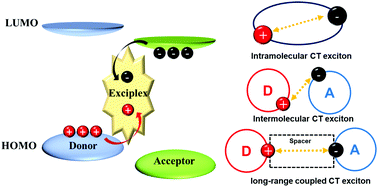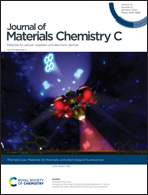Intermolecular TADF: bulk and interface exciplexes
Abstract
As intermolecular excited states with separated HOMO and LUMO, exciplexes for OLED are gradually taking a contribution in thermally activated delayed fluorescent (TADF) devices due to their advantages in triplet exciton utilization and charge balance. Since Adachi found TADF properties from intermolecular exciplex systems in 2012, a variety of exciplexes containing donors and acceptors have been developed to show TADF characters. In addition to the use of triplet exciton emission through TADF exciplexes for emitters to achieve a high EQE, exciplexes can also be used as hosts of emitters to extend the device lifetime by decreasing the triplet exciton concentration and improving the charge balance, which delays degradation and aging of organic molecules. In this paper, TADF exciplexes are discussed and summarized by dividing into bulk and interface types. The bulk type can generate exciplexes more stably, whether acting as emitters or hosts, which has been widely reported. The interface exciplex TADF has a shorter development time than that of the bulk type, but shows greater potential. The excitons generated by the interface-type exciplex are concentrated at the interface of the donor/acceptor molecules, and the recombination zone is about 5 nm thick, which can effectively reduce the exciton capture by transport materials, leading to higher efficiency and better stability.

- This article is part of the themed collection: Materials for thermally activated delayed fluorescence and/or triplet fusion upconversion


 Please wait while we load your content...
Please wait while we load your content...